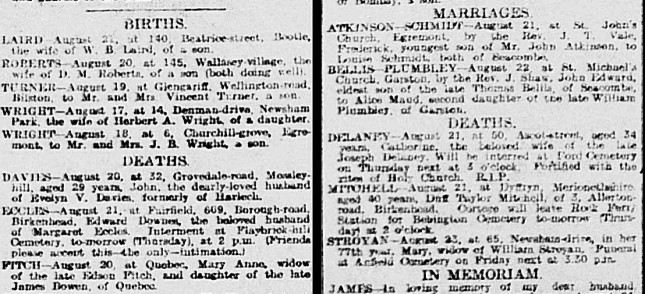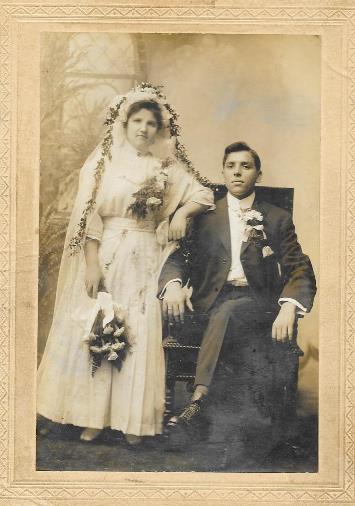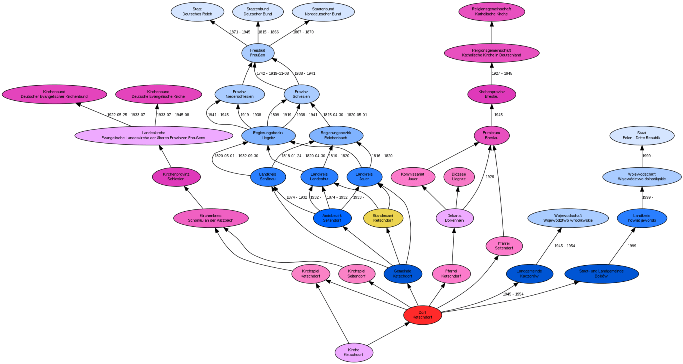Blog


6M Free British Family Notices Now Online
Nearly 6 million British family notices are now free to explore online! Find your ancestors from England, Scotland, Ireland and Wales in more new and updated records, too: newspaper articles, British almanacs and directories, clandestine marriages, Liverpool Catholic and Warwickshire Church of England records, military collections (especially WWI) and Scotland death notices.
6 million free British Family Notices now searchable
The British Newspaper Archive is home to millions of exclusively-digitized newspaper pages from the British Library, covering England, Scotland, Ireland and Wales. Great news for those of you who don’t already subscribe: a free collection of British family notices that appear in papers on The British Newspaper Archive is now searchable at FamilySearch.org.
The index contains nearly 6 million records and may include family names, relationships, dates, and places of vital events and the publication. Better yet, you’ll find links to images in those newspapers, like this example:
More British Isles newspaper coverage
Family notices are only one of the many spots in a newspaper in which your relatives may appear! Feature news article coverage, crime reports, legal notices, advertisements, even sporting events. In recent weeks, The British Newspaper Archive has added over 270,000 digitized newspaper pages its site—and these updates also appear in the newspaper collections at sister site Findmypast.com. Updates to existing titles span England, Scotland and Ireland and include the following (links go to the Findmypast collections):
- Liverpool Echo 1991-1993
- Drogheda Argus and Leinster Journal 1873-1904, 1906-1912, 1917, 1922, 1927
- Evening Herald (Dublin) 1988
- Scottish Referee 1894
- Irish Independent – 1918-1919, 1986, 1988, 2002
- Mid Sussex Times 1914-1918
- Liverpool Echo – 1989-1990
- The Newcastle Journal – 1992
- The Music Hall and Theatre Review – 1908-1909, 1912
- The Scottish Referee – 1893, 1895-1896, 1899
- The Wicklow People – 1914, 1917-1929, 1931-1976, 1986-2001
More British Isles genealogy records now online
British directories and almanacs. Findmypast.com has added over 329,000 records to its British Directories and Almanacs collection. According to the site, “the new additions include English & Welsh publications spanning the years 1766 to 1919. Inside you will find the names, addresses and occupations of prominent people, tradesmen, people who held office, business owners and local civil servants.”
Browse these pages to learn more about an ancestor’s life. For example, says the site, “They provide topographical accounts of towns, social statistics and comprehensive guides of towns or cities, as well as full listings of gentry, business owners, tradespeople, civil servants, church leaders, school teachers and much more. Furthermore, you can explore the history of your home by searching the publications by address, where you may discover previous proprietors.”
England clandestine marriages. Now on Findmypast are more than 881,000 indexed images of clandestine marriage records covering the years 1667 to 1775. “Records will reveal a combination of the couple’s names, marital conditions, occupations and residences,” says the collection description. The term “clandestine” refers to marriages performed outside the Anglican church, which were still recognized by law but categorized as common-law. According to the site, “There are a number of reasons why individuals would have participated in these ceremonies. The couple may have wanted to be married in secret and away from their home. There may have been a reason that the marriage needed to be performed quickly. A clandestine marriage also cost far less than a traditional wedding. However, not all reasons were innocent, and the courtrooms heard many cases of people coerced or forced into a marriage or cases of bigamy. At this time, the age required for marriage was 14 for men and 12 for women.”
Liverpool Catholics. Genealogy Giant Ancestry.com has updated several collections of Catholic parish records for Liverpool, England, provided in association with Liverpool City Council. Explore these collections by first by going to Ancestry.com here and then in the menu, select Search > Card Catalog > and search for the name of the collections:
- Liverpool, England, Catholic Baptisms, 1741-1916. Over 1.5 million records! According to the collection description, “most baptisms took place shortly after children were born. Baptism register entries in these records may include name, birth date, baptism date, father’s name, mother’s name, godparents, minister [and] parish.”
- Liverpool, England, Catholic Confirmations, 1813-1922. Over 100,000 records; may include the name, age, confirmation date, parent’s name and parish.
- Liverpool, England, Catholic Marriages, 1754-1932. Over 300,000 records in this collection. Entries may include marriage date, bride’s name and age, groom’s name and age, parents’ names and parish.
- Liverpool, England, Catholic Burials, 1813-1985. Over 720,000 records; may include the deceased’s name, age, burial date, residence, and gravesite.
Warwickshire Church of England parish registers. FamilySearch.org has updated its database of England, Warwickshire, Parish Registers, 1535-1984. With nearly 3 million records spanning about 450 years, this collection of Church of England parish registers contain records of christening, marriage and burial entries.
World War I collections. Now online at Findmypast.com, you can search these new or updated databases relating to the Great War:
- Irish Officers Died in the Great War, 1914-1919. “Search over 1,000 records to learn more about the Irish officers who died in the First World War. Discover where and when an officer died, as well as the cause of death. You may also uncover details of an officer’s family and pre-war life.”
- Honourable Women of the Great War, 1914-1918. “Discover your female ancestor who served during the First World War. Learn about the wartime activities your ancestor was involved in as well as her pre-war life. You may also find a photograph of your ancestor.”
- Airmen Died in The Great War, 1914-1919. “Discover your relative’s name, birth and death years, cause of death, rank, and more. These records come from the Naval & Military Press. The service branches designated in this collection are as follows: Australian Flying Corps, Miscellaneous Airmen Casualties, Pre-War Casualties, Royal Air Force, Royal Flying Corps, Royal Naval Air Service, United States Air Service Casualties Attached to the Royal Fighting Corps/Royal Air Force, US Navy Casualties, and Women’s Royal Air Force.”
More British military collections. These two collections have been updated at Findmypast:
- British Subjects Who Died In The Service Of The Indian Empire. ”This collection contains over 1,100 records and each result includes both a transcript and an image of the original document. Records will reveal a combination of the individual’s name, birth and death years, rank, regiment, and service history.”
- Britain, Campaign, Gallantry & Long Service Medals & Awards. “Over 58,000 additional records have been added to the collection. The new additions cover recipients of the Military Cross, Distinguished Flying Medal, Distinguished Conduct Medal, Distinguished Service Order and Commando Gallantry awards.”
Scotland deaths. Findmypast’s Scotland, Lanarkshire Death & Burial Index 1642-1855 includes more than 64,000 death and burial records from 31 burial grounds. “Each result includes a transcript taken from an original document that will reveal a combination of your ancestor’s birth year, death and burial dates, age at death, burial place, and mortcloth price.” (The mortcloth was the cloth spread over the coffin.)
What does “British” actually mean?
To start exploring your British Isles roots, it would help to know what the term “British” actually means. Click here to read the answer and tips for getting started in your British Isles family history research.

About the Author: Sunny Morton
Sunny is a Contributing Editor at Lisa Louise Cooke’s Genealogy Gems; her voice is often heard on the Genealogy Gems Podcast and Premium Podcasts. She’s known for her expertise on the world’s biggest family history websites (she’s the author of Genealogy Giants: Comparing the 4 Major Websites); writing personal and family histories (she also wrote Story of My Life: A Workbook for Preserving Your Legacy); and sharing her favorite reads for the Genealogy Gems Book Club.
Disclosure: This article contains affiliate links and Genealogy Gems will be compensated if you make a purchase after clicking on these links (at no additional cost to you). Thank you for supporting Genealogy Gems!
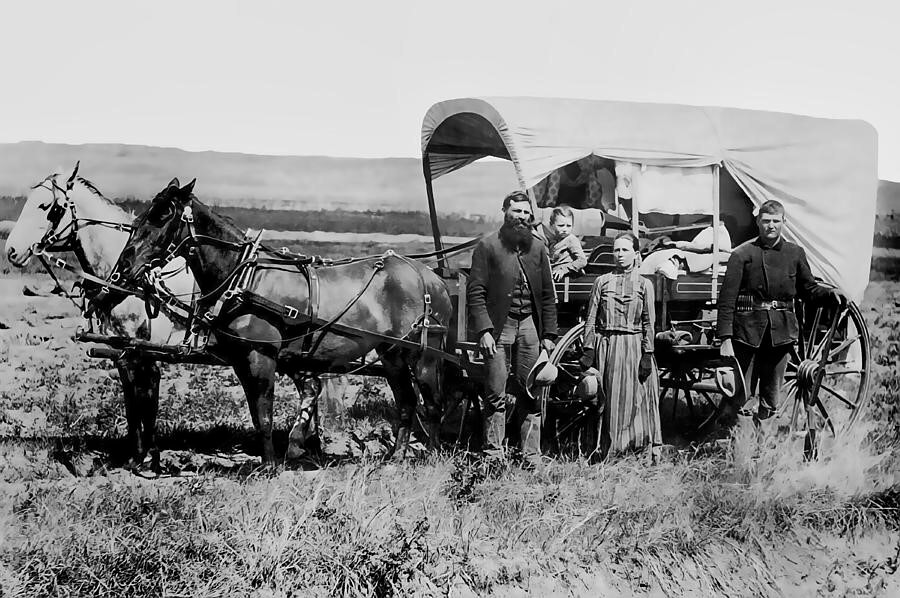
How to Research Your Pioneer Ancestors that Migrated West
To learn how to research your ancestors who migrated west you have to take a deeper look at the Westward Expansion. Understanding the pulls of the time will help you discover how or why your ancestors went west. Finding a pioneers path of migration isn’t always easy. Legacy Tree Genealogists has a team of specialists very experienced in answering the questions that arise while following your ancestors west and can help you reconstruct the details of their journey westward.

The Pull of the West
Settlers headed west for many reasons, among them were land, gold, religious freedom, military service, and perhaps to escape the law. Whether they traveled by boat, wagon, on horseback, or even on foot, the hardy men, women, and children that braved the dangers of the Old West faced many hardships. War, disease, starvation, and storms plagued western settlers every step of the way. The perilous and transient lifestyle of the pioneers also left a lasting effect on the surviving paper trail. Those records, if found, can allow modern researchers to reconstruct the paths they took on their journey westward. Though it can be quite difficult to recover their stories today, the rewards of doing so can be tremendous, revealing the connections everyday people had with storied events that have grown even more legendary with every passing year.
Land, Land and More Land!
An important thing to keep in mind is that the primary reason most people moved west was the availability of vast tracts of land west of the Mississippi River after the Louisiana Purchase in 1803. With that one purchase of land by the federal government, President Thomas Jefferson nearly doubled the size of the United States. In less than twenty years, Missouri entered the United States, in 1821. In subsequent treaties and wars, the United States acquired most of the remainder of the Great Plains, Rocky Mountain West, and the Pacific Coast. The rush to take up the millions of acres of new land and search for riches buried in the earth began in earnest after 1830, with the advent of the Oregon Trail and the seductive allure of the California gold fields in the 1840s. However, in truth westward movement had been an integral part of American life since 1607.
Following Your Ancestors West: Where to Look
Among the most important sets of records for tracing western settlement in the United States are the documents held by the U.S. Bureau of Land Management at the General Land Office. This federal agency houses approximately 9 million land records dating back to the late 1700s. After a gargantuan indexing and scanning campaign, many of these records are now searchable and available to view at the agency’s website, glorecords.blm.gov. Searching for an ancestor in this database produce a number of hits that can help you place your ancestor along various waypoints to the West. Individuals often bought and sold federal land quickly, so many of these purchases might not reflect actual settlement. However, they can give you a good idea of an ancestor’s general path of migration.
In addition to the county deed records often found along an ancestor’s way west, another important set of land records is the mound of documents produced as a result of the Homestead Act. Though images of the land patents issued under the Homestead Act will usually be found at the General Land Office website, another crucial group of associated documents not found there is the Land Case Files. These files contain the original application for homestead land, which often include land descriptions, and sometimes citizenship documents and affidavits of witnesses.
Regardless of where they were created or recorded, land documents provide critical, and sometimes the only, documentation of an ancestor’s westward migration.
Census, Military, and More
While not exactly the same as land records, census returns can also document the migratory path of your ancestors. If the head of household is missing for an ancestor’s family in the 1850 census, try searching his name in the census index for California. You just might find him listed in one of the counties in the gold fields, possibly living in households full of single or married men seeking their fortunes in the far western country. Even if he is listed at home in 1850, check the returns for California. Occasionally men would be counted twice: once at home with their families in the East, and again in a camp in California, on the other side of the continent.
I learned this firsthand when I found an ancestor named Sylvester Crank living with his wife and children in Clinton County, Missouri, in the 1850 U.S. Census. I also found him listed in a household full of only men the same year in Placerville, El Dorado County, California, working as a miner. His son Jesse, also a miner, was listed in both households along with his father, who was close to fifty years old. Placerville was at the epicenter of the then exploding California Gold Rush and had only recently been known as Hangtown, after the predilection of the local judges to resort to the rope.

Sylvester Crank recorded as living with his wife and children in Clinton County, Missouri, in the 1850 U.S. Census

Sylvester Crank and son Jesse Crank also recorded in the Placerville, El Dorado County, California 1850 U.S. census
If your ancestor served in the regular U.S. Army during the period of westward expansion, you’re in luck. U.S. Army enlistment registers have been preserved beginning in 1789, and running to 1914, when the last vestiges of the Old West had mostly been swept away. These enlistment registers often include place of birth and a personal description. They also allow you to trace the path of your Army ancestor in the West because they show each post he was stationed at throughout all of his periods of enlistment. These records make it possible to trace your ancestor from fort to fort throughout the Old West like almost no other documents can. Additionally, many of these same regular army veterans, including the famed Buffalo Soldiers, applied for and received pensions for themselves or their widows and descendants. These files are similar to the more familiar Civil War pension files, many of which run to hundreds of pages. They often document ancestors’ lives in minute detail, including their physical health and their experience during service, including wounds received in battle. Military records are an invaluable source for tracing the path of any ancestors whose path west was facilitated by military service.
Land, census, and military records are but a few of the many sources that you can use to assist you in your quest to walk in your ancestors’ footsteps as they made their way through the wild, western lands of the American frontier.
Do you have ancestors that migrated westward? Have you hit brick walls when it comes to finding records of them? Contact Legacy Tree Genealogists for a free research package quote! Their genealogy experts can help you recover the stories of your ancestors that lie waiting in thousands of documents that still survive from that tumultuous, endlessly fascinating era. Exclusive Offer for Genealogy Gems readers: Receive $100 off a 20-hour research project using code GGP100.
Legacy Tree Genealogists is the world’s highest client-rated genealogy research firm. Founded in 2004, the company provides full-service genealogical research for clients worldwide, helping them discover their roots and personal history through records, narratives, and DNA. Based near the world’s largest family history library in downtown Salt Lake City, Utah, Legacy Tree has developed a network of professional researchers and archives around the globe. More information is available at https://www.legacytree.com.
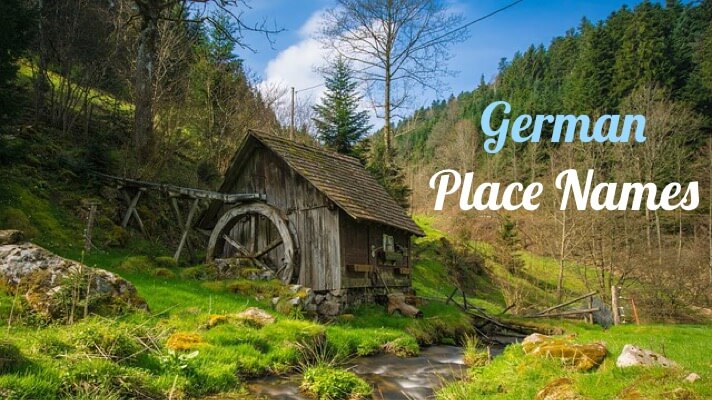
German Place Names: Find Your Ancestors’ Hometown with This Free Online Tool
 German place names have changed dramatically over time, so it can be challenging to identify your German ancestors’ place of origin. This free online tool helps family historians navigate changes in German place names, jurisdictions, and boundaries.
German place names have changed dramatically over time, so it can be challenging to identify your German ancestors’ place of origin. This free online tool helps family historians navigate changes in German place names, jurisdictions, and boundaries.
Thank you to guest expert Timo Kracke; see his biography below.
German Place Names:
Why So Challenging?
Researchers with ancestors from Germany or former German territories might have already stumbled over the problems presented by the border, place name, and jurisdictional changes that occurred throughout history.
Here’s an example: If you are researching in a village which belonged to Silesia before the end of World War II, you’ll find that the village name has now changed from the German name to a Polish name. It also might be possible that the archive holding the records of your ancestral village has changed due to a change in the village’s civil or ecclesiastical jurisdiction.
If you dive a bit deeper into German history you will discover that, over time, a lot of changes took place. It is essential to understand the jurisdictional structure in Germany, the meaning of a parish, a municipality and a place’s borders. So how can you find out more about German and former German places? Let’s dive into a fantastic free tool that will help you navigate these confusing changes, and identify your ancestors’ homelands.
The GOV: Free Tool for Help Finding German Place Names
The GOV (Geschichtliches Ortsverzeichnis) will guide you through all these different aspects of place identification in Germany. The GOV is one of many free databases on the web servers of CompGen, Germany’s largest genealogical society. The society focuses today on using technology to gather, preserve, and ensure access to genealogical data. (Don’t forget you can use Google Translate to help you with these websites! And if you’re using a Chrome browser, just right-click on the webpage and select “Translate to English.”)
GOV provides genealogists, historians, and sociologists with a unique worldwide place ID and access to high-quality place information. Using a simple search engine, you can search for current and previous place names and identify a place on a map, if GOV lists more than one possible match.
You’ll also find plenty of information about the places themselves. This information includes the geographical location of a place (coordinates or a position on a map); key properties such as the postal code, previous or other names; and past administrative, legal, and religious affiliations. You can also learn about a place’s demographics, historical and genealogical sources related to the place, and find links to external information. Source citations are included for information within the GOV.
If you’re wondering just how complex place identification could it be, let me give you the example of the village of Ketschdorf. This chart shows the evolution of the parish and municipal jurisdictions of Ketschdorf. Before the end of WWII, the place belonged to Silesia, during which time it had several different jurisdictions. of the parish and the municipality during that time. [Editor’s note: Click the image to enlarge a bit more. It’s tough to make this graphic big enough for close reading–but I think you get the idea of how complex it was! The modern Ketschdorf is the tiny light purple circle on the very bottom of the graphic.]
More about CompGen for German genealogy
- The site digitizes, indexes, and publishes worthwhile genealogical source material, including private family trees, local heritage books, historical address books, personal newspaper announcements and images of headstones. The digital library includes scans of more than 900 historical address books.
- It’s free! Their online databases (with more than 40 million entries) are a well-known support for all family historians.
- Its genealogical wiki (http://genwiki.de) is one of the biggest wikis in Germany and provides a wealth of information about doing genealogy in Germany. They also host a forum and mailing lists and publish two print magazines.
Dive Deeper into German Place Names
 Compgen is just one of the tools that can help you find your Germany ancestor’s hometown. Learn even more about German history and place names with the Mastering German Place Names class from Family Tree Magazine. German expert Jim Beidler will cover how German history has impacted place names, how to use German phonetics to find the correct places, how to choose between places with identical names, and more! This 30-minute webinar download will have you dissecting geographical terms and administrative divisions so you can find your ancestors in their German homeland.
Compgen is just one of the tools that can help you find your Germany ancestor’s hometown. Learn even more about German history and place names with the Mastering German Place Names class from Family Tree Magazine. German expert Jim Beidler will cover how German history has impacted place names, how to use German phonetics to find the correct places, how to choose between places with identical names, and more! This 30-minute webinar download will have you dissecting geographical terms and administrative divisions so you can find your ancestors in their German homeland.

About the Author: Timo Kracke has about 20 years of experience in genealogy. Timo volunteers for several German societies and is a board member with the Verein für Computergenealogie e.V. and Oldenburgische Gesellschaft für Familienkunde e.V. Since 2012 Timo is the voice of the German Podcast “der Genealoge.“ In 2014 he started “die Familienforscher“, a Kids-Genealogy project which publishes guides and ideas for involving kids in genealogy for use in kindergartens, schools, and genealogical societies. Timo is a tech guy who is active in several social networks and loves to share his knowledge with the community.
Disclosure: This article contains affiliate links and Genealogy Gems will be compensated if you make a purchase after clicking on these links (at no additional cost to you). Thank you for supporting Genealogy Gems!


